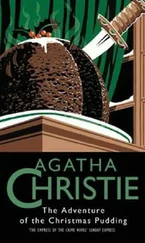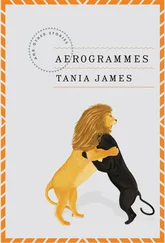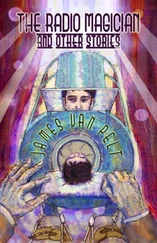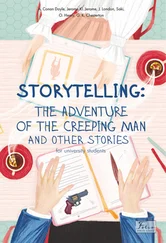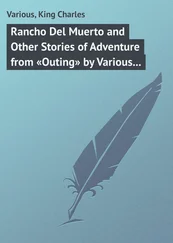James Oxley - My Strange Rescue and other stories of Sport and Adventure in Canada
Здесь есть возможность читать онлайн «James Oxley - My Strange Rescue and other stories of Sport and Adventure in Canada» — ознакомительный отрывок электронной книги совершенно бесплатно, а после прочтения отрывка купить полную версию. В некоторых случаях можно слушать аудио, скачать через торрент в формате fb2 и присутствует краткое содержание. ISBN: , Жанр: foreign_prose, foreign_language, на английском языке. Описание произведения, (предисловие) а так же отзывы посетителей доступны на портале библиотеки ЛибКат.
- Название:My Strange Rescue and other stories of Sport and Adventure in Canada
- Автор:
- Жанр:
- Год:неизвестен
- ISBN:http://www.gutenberg.org/ebooks/51308
- Рейтинг книги:5 / 5. Голосов: 1
-
Избранное:Добавить в избранное
- Отзывы:
-
Ваша оценка:
- 100
- 1
- 2
- 3
- 4
- 5
My Strange Rescue and other stories of Sport and Adventure in Canada: краткое содержание, описание и аннотация
Предлагаем к чтению аннотацию, описание, краткое содержание или предисловие (зависит от того, что написал сам автор книги «My Strange Rescue and other stories of Sport and Adventure in Canada»). Если вы не нашли необходимую информацию о книге — напишите в комментариях, мы постараемся отыскать её.
My Strange Rescue and other stories of Sport and Adventure in Canada — читать онлайн ознакомительный отрывок
Ниже представлен текст книги, разбитый по страницам. Система сохранения места последней прочитанной страницы, позволяет с удобством читать онлайн бесплатно книгу «My Strange Rescue and other stories of Sport and Adventure in Canada», без необходимости каждый раз заново искать на чём Вы остановились. Поставьте закладку, и сможете в любой момент перейти на страницу, на которой закончили чтение.
Интервал:
Закладка:
A little further on, the long, low curling rink, gaily decorated, proclaims good cheer from every lighted window. Turning to our left, we catch through the trees a glimpse of the other skating pond, with its ice palace for the band and quaint log hut for tired skaters. Right in front of us a huge bonfire blazes up, making music with its merry crackling.
But we have lingered too long in taking all this in. We are stopping the way, and an impatient crowd is pressing hard upon us. Let us place our toboggan, then, carefully in the centre of the groove, adjust the cushions, coil up the cord, and seat ourselves securely, with stout grasp upon the hand-rail.
"All ready?" cries the steerer.
"Ay, ay!" we reply.
Giving the toboggan a strong shove, he springs on behind, with foot outstretched for rudder, and the next instant – well, the only way to describe what follows is that we just drop into space. We don't simply coast, for so steep, so smooth is the descent that we are not conscious of having any connection whatever with the solid earth for at least twenty-five yards, and then, with a bump and rattle and scrape of hard wood against still harder ice, we speed like an arrow through lines of flashing light and rows of open-eyed onlookers, until full four hundred yards away we come gently to a stop in the soft, deep snow amid the trees.
The ordinary toboggan is made in the following fashion: Three strips of birch or bass wood, a quarter of an inch thick and from four to eight feet long by eight or nine inches broad, are put side by side and held in position by cross-pieces placed about two feet apart, the whole being bound tightly together by lashings of gut, for which grooves are cut in the bottom so that they may not be chafed by the snow. The thin end of the strips is then turned up and over, like the dashboard of a sleigh, and secured by strong pieces of gut tied under the first cross-piece. A long thin pole on either side, made fast by loops to the cross-pieces, for a hand-rail; a comfortable cushion, stuffed with straw, shavings, or wool, and a long cord, are then added, and behold your toboggan is complete.
As may be guessed from the use of gut for fastenings, the toboggan is an Indian invention, and was in use among the red men as a means of winter conveyance for centuries before the white man saw in it a source of delightful amusement. It is doubtful if the Indian way of making toboggans can be much improved upon, although within the past few years pale-face ingenuity has been exerted toward that end. The peculiarity of the new toboggans consists in narrow hard-wood slats being used instead of the broad, thin boards, and screws in place of gut lashings. For my own part, I prefer the old-fashioned kind. The new-fangled affairs are no faster, are a good bit heavier, more liable to break, and being much stiffer, have not that springy motion which forms so attractive a feature of the others.
A third kind, just now making its appearance, has the hand-rail held some inches high by means of metal sockets, and the front is gathered into a peak, while it too is put together with screws. The higher hand-rail is unquestionably an advantage, and if it prove durable, will probably render this last style very popular.
In choosing a toboggan you must be careful to select one whose wood is straight-grained, and as free from knots as possible, precisely as a cricketer would choose his bat. The cross-pieces should be closely examined, for they have to endure severe strains, and will be sure to snap if there is a weak spot in them. Then the gut lashings ought to have close inspection, especial care being taken to see that they are well sunk into the wood along the bottom, so as to be safe from chafing. Where the gut has given way I have substituted strong brass wire with very good results, after once it was drawn tight enough; but this I found no easy matter.
Having selected a toboggan to your satisfaction, the next thing is to cushion it. The cushion should run the whole length, and be not less than two inches thick. Good stout furniture rep, stuffed with "excelsior," makes a capital cushion, although some prefer heavy rug material, and extravagant folk even go the length of fur trappings. The cushion must be well secured to the hand-rail, or it will give trouble by slipping off at the first bump.
As to the management of a toboggan, it is not easy to say much more than that it requires a quick eye, a good nerve, and strength enough to steer.
There are several ways of steering. One is to sit with feet turned up in front, and guide the machine by means of sticks held in the hands. Another is to kneel, and employ the hands in the same way. Then some very daring and reckless fellows will venture to stand up, and using the cord as reins, go careering down the slope, with the danger of a tremendous tumble every moment. The most sensible and effective way of all, however, is to sit sideways, having one leg curled up underneath you, and the other stretched out behind, like the steering oar of a whale-boat, "Yankee fashion," as it is called in Canada. This mode not only gives you perfect control of your toboggan, but has the further and very important advantage of making it easy for you to roll off, and acting as a drag, bring the whole affair to a speedy stop in the event of danger appearing ahead. More than once have I escaped what might possibly have been serious injury at the cost of a little rough scraping over the snow.
From two to six people can sit comfortably on a toboggan, according to its length. The perfect number is four – a man at the front to bear the brunt of danger, and ward off the blinding spray of snow, two ladies next, and then the steerer bringing up the rear, and responsible for the safety of all. Ah me! but what a grand thing it is to be young enough to thoroughly enjoy the tobogganing season.
The toboggan has many advantages over the sled such as is used for coasting. Wherever a sled can go, a toboggan can go also, while on many a hill that offers splendid tobogganing, a sled would be quite useless. Again, it is much lighter than the sled, which means that you do not have to work half so hard for your fun. A third advantage is its safety, more especially in the hands of children. It has no sharp iron-shod ends to make ugly gashes in little legs. Tobogganing has its perils, of course, and I might, if I chose, tell some experiences that would perhaps cause a nervous thrill; but what sport is absolutely free from danger? And since Mark Twain has earned the gratitude of us all by proving that more people die in their beds than anywhere else, why should the most timid be deterred by the faint possibility of peril from enjoying one of the finest and most healthful winter amusements in the world?
A MIC-MAC CINDERELLA
The dear old stories that delighted us in our nurseries as mother or sister lured the lingering dustman to our eyes by telling them over and over, do not by any means belong to us alone. They are the common property of mankind. Even the most rude and ignorant peoples have them in some form or other, and the study of these myths and the folk-lore associated with them is one of the most interesting branches of modern philology. "Jack the Giant-Killer," "Puss in Boots," "Aladdin and his Wonderful Lamp," and all the rest of them, have their parallels in the farthest corners of the globe. They are to be found, too, among the dusky race whose mothers told them to their children long before pale-face eyes looked covetously upon American shores and pale-face powder sent terror into the hearts of brown-skinned braves. Take this pretty legend of Tee-am and Oo-chig-e-asque as it was told to an unforgetful listener beside a Mic-Mac camp-fire in Nova Scotia, and, comparing with our own familiar fable of Cinderella, see if the two are not alike in so many points as to make it easy to believe they had a common origin.
Читать дальшеИнтервал:
Закладка:
Похожие книги на «My Strange Rescue and other stories of Sport and Adventure in Canada»
Представляем Вашему вниманию похожие книги на «My Strange Rescue and other stories of Sport and Adventure in Canada» списком для выбора. Мы отобрали схожую по названию и смыслу литературу в надежде предоставить читателям больше вариантов отыскать новые, интересные, ещё непрочитанные произведения.
Обсуждение, отзывы о книге «My Strange Rescue and other stories of Sport and Adventure in Canada» и просто собственные мнения читателей. Оставьте ваши комментарии, напишите, что Вы думаете о произведении, его смысле или главных героях. Укажите что конкретно понравилось, а что нет, и почему Вы так считаете.

